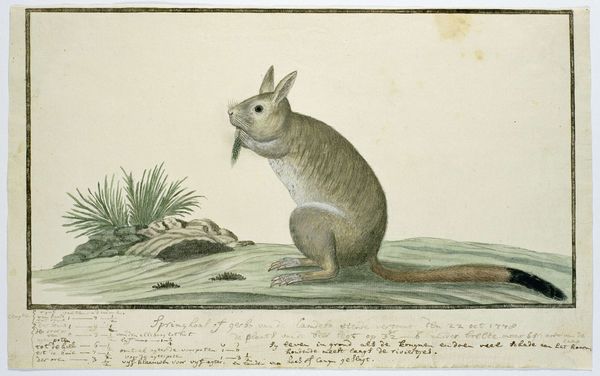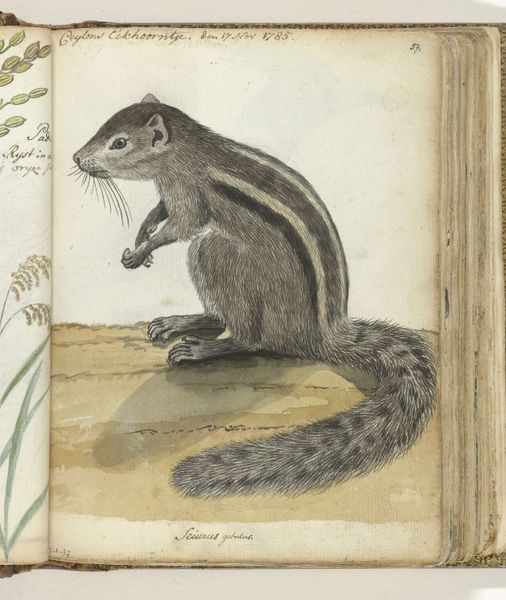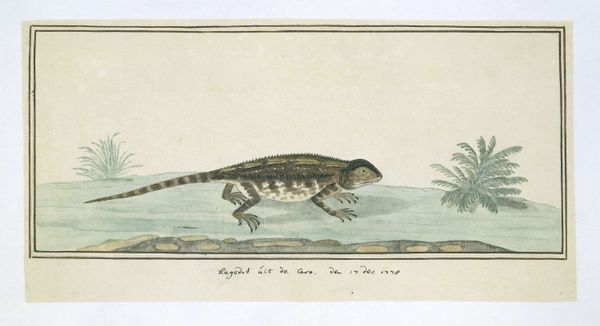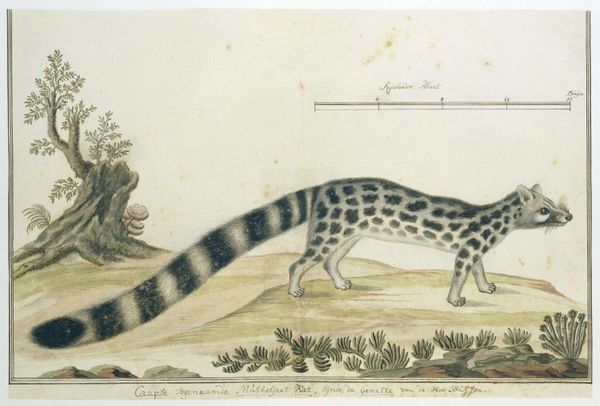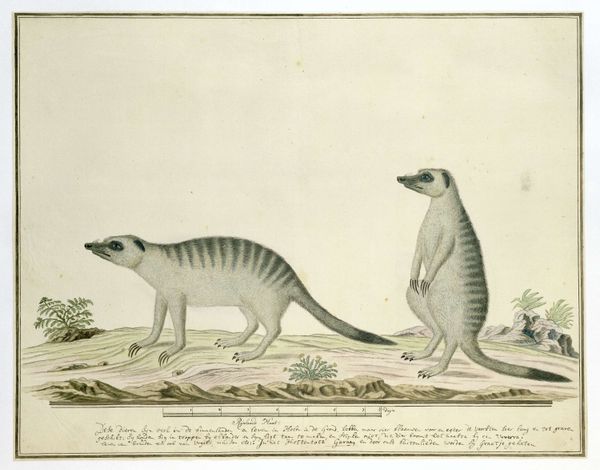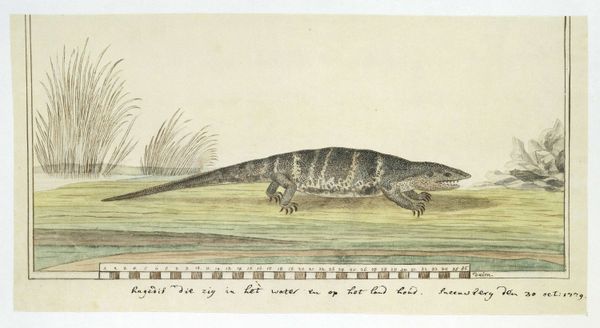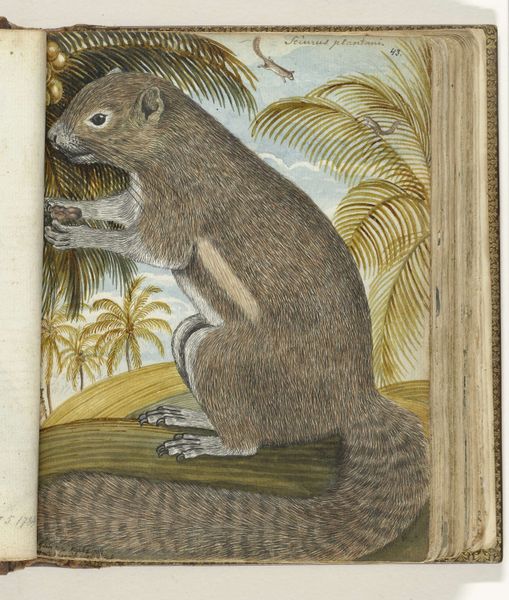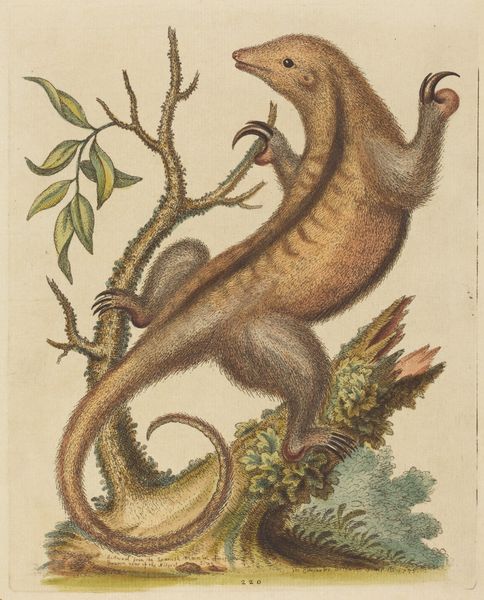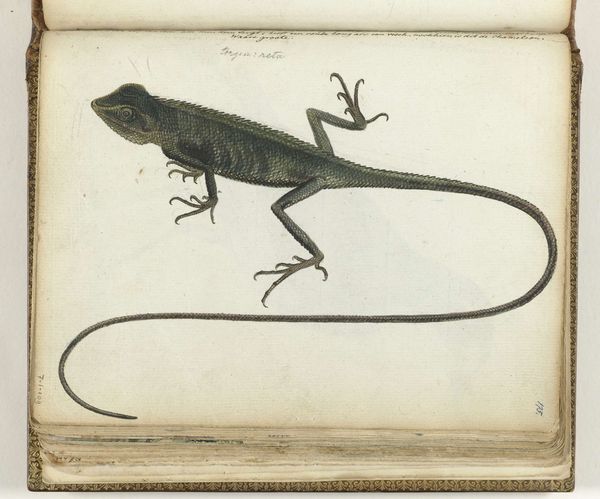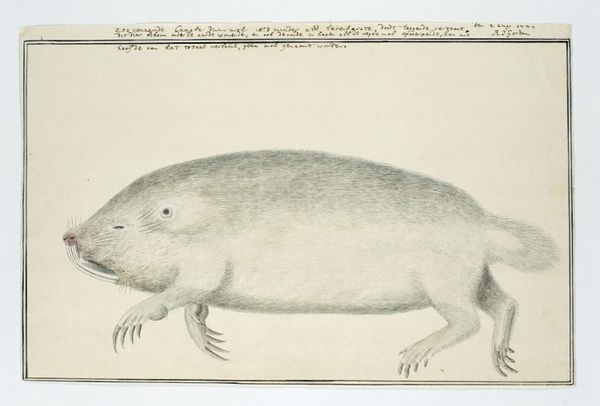
drawing, coloured-pencil
#
portrait
#
drawing
#
coloured-pencil
#
landscape
#
coloured pencil
#
realism
Dimensions: height 660 mm, width 480 mm, height 256 mm, width 408 mm, height 205 mm, width 394 mm
Copyright: Rijks Museum: Open Domain
Curator: What immediately strikes me is the application of colored pencils. It really highlights the meticulous labour involved in creating such a realistic depiction. How does that materiality affect your understanding of the work? Editor: Well, this is a drawing of a Cape ground squirrel, "Xerus inauris," probably created between 1777 and 1786 by Robert Jacob Gordon. The realism achieved with colored pencil is pretty impressive. It feels almost photographic. I’m wondering about the choices behind creating such a detailed drawing? Curator: Right, consider the social context: Gordon was a military officer and explorer, right? This wasn't just about art; it was about documentation, knowledge production. What kind of power dynamic do you think exists when explorers depict the flora and fauna of colonized lands with such exactitude? Editor: Hmmm, that’s interesting. I hadn’t thought about it that way. I suppose it’s not just an innocent drawing of a squirrel, then. It's more about claiming knowledge and control of the natural world through artistic representation? Curator: Exactly! And who was this knowledge intended for? Was it circulated amongst scientists, or was there a broader audience consuming these images? The material form – the drawing itself – carried information, but it also signified something about European authority and consumption of the natural world. How does the presence of that landscape inform your interpretation, considering these are colonial times? Editor: That adds another layer. It’s not just a portrait; it's about placing the animal within a specific environment. Thinking about the landscape and its resources… It’s like claiming the territory. So the choice of coloured pencil becomes really important in this context, creating a realistic image as evidence. Curator: Precisely. The act of meticulously rendering each detail transforms the squirrel and its environment into objects of study and possession, materially reinforcing a specific worldview. Editor: I see it now! I'm starting to consider the piece not just for its artistic value, but what it says about European colonialism. Curator: Absolutely, and understanding art’s role in systems of power allows for a richer understanding of the history and cultural context of these works.
Comments
No comments
Be the first to comment and join the conversation on the ultimate creative platform.
